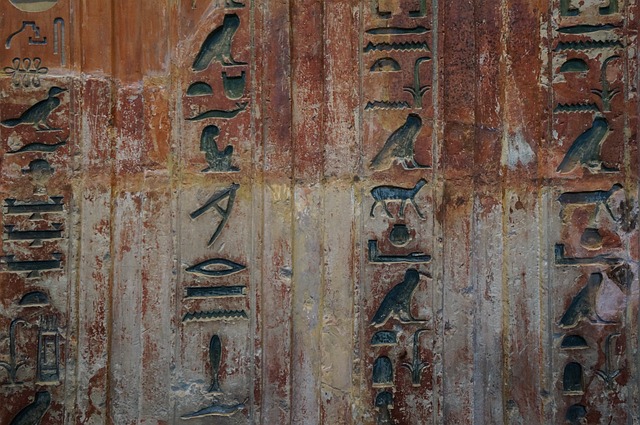Your Passport to Cultural Exploration: Museums Travel Guides
Traveling is not merely a way to escape the daily grind; it opens doors to new worlds brimming with stories, history, and culture waiting to be explored. Among the many ways to experience these rich narratives, museums stand out as the sanctuaries of knowledge, housing artifacts and exhibitions that tell the tales of human civilization. This article will delve into the essence of museums as travel destinations and how travel guides can enhance your experience, making every visit a memorable cultural exploration.
The Significance of Museums in Cultural Exploration
Museums are often referred to as the “treasure houses” of art and history. They play a pivotal role in preserving the heritage, artistic expressions, and social narratives of different cultures. Each museum, from the grand institutions in major cities to small, local galleries, offers unique insights that allow travelers to connect with places beyond the surface. Here are some reasons why museums hold such a significant place in the realm of cultural exploration:
Firstly, museums serve as educational hubs that provide a deep dive into the past. Visitors can engage with historical artifacts, artworks, and exhibitions curated to reflect societal evolutions, cultural practices, and historical narratives. They bring history to life, allowing for a dynamic interaction with the past that is often not possible in traditional learning environments.
Secondly, museums help promote cultural appreciation and dialogue. In an increasingly globalized world, understanding different cultures is crucial in fostering tolerance and empathy. Museums create platforms for sharing diverse perspectives, showcasing the richness of human expression across various cultures and periods. Through exhibitions that feature international artists, artifacts, and narratives, museums help audiences discover the interconnectedness of global histories.
Lastly, museums often reflect the identity of their host cities and regions. The local art and culture showcased in museums provide context and insight into the societal values, conflicts, and inspirations that shape a community. For travelers, museums are a mirror that reflects not just the identity of a place but also its aspirations and struggles.
Travel Guides: Your Companion for Museum Exploration
As the old adage states, “Knowledge is power.” When visiting a museum, having the right information can greatly enhance your experience. Travel guides tailored for museums provide invaluable context that allows you to appreciate not just what you see but also the stories and significances behind each piece. Here’s how a good travel guide can transform your museum visit:
Guided Context and Expert Insight
Travel guides often include expert commentary on various exhibitions, artifacts, or artistic styles featured in the museum. Rather than merely observing, travelers can delve deeper into understanding the nuances of art movements, historical events, and cultural shifts that shaped the pieces they admire. This extra layer of insight can transform a simple visit into an enlightening experience.
Prioritizing Must-See Exhibitions
With countless museums worldwide, each housing thousands of items, knowing where to focus your time can be a challenge. Travel guides can help prioritize must-see exhibitions or noteworthy collections, ensuring that you don’t miss the highlights. Whether it’s a famous painting, an ancient artifact, or a contemporary installation, a good guide points out essential stops and helps you navigate the museum efficiently.
Understanding Related Narratives
Art and history are seldom isolated. Understanding the connections between various pieces and exhibitions can enrich the experience. Travel guides often explore relationships between different artworks or cultures, shedding light on their historical context, influences, and impact. This interconnectedness can enrich your understanding and appreciation of the exhibits.
Practical Information and Tips
Travel guides also provide practical information that can have a significant impact on your visit. Tips such as the best times to visit, ticket purchasing advice, accessibility options, and suggestions for guided tours make your visit smoother and more enjoyable. Additionally, some guides may include details about surrounding attractions, restaurants, and accommodations, allowing you to plan your visit more comprehensively.
Types of Museums and Their Cultural Offerings
As travelers embark on their cultural explorations, understanding the different types of museums and their unique offerings is crucial. Museums can be broadly categorized into several types, each focusing on preserving and showcasing different aspects of culture and history. Here are some key categories:
Art Museums
Art museums, ranging from fine arts to contemporary installations, are treasure troves of artistic expression. These institutions often house masterpieces from renowned artists and serve as platforms for emerging talent. Art museums not only display paintings and sculptures but also facilitate discussions about aesthetics, technique, and innovation in creative expression.
History Museums
Focusing on historical artifacts and narratives, history museums offer visitors insight into specific events, cultures, and the progression of societies. Through exhibitions, films, and interactive installations, these museums narrate stories that have shaped nations and civilizations. They often emphasize local history, making them vital for understanding regional identities.
Science and Natural History Museums
Science and natural history museums are dedicated to preserving and educating the public about the natural world and scientific advancements. These institutions often feature exhibitions on topics ranging from paleontology and anthropology to space exploration and environmental science. They play a critical role in inspiring curiosity and appreciation for the sciences in visitors of all ages.
Specialized Museums
In addition to general categories, numerous specialized museums cater to niche interests. These can include museums focused on specific themes or collections, such as ethnographic museums, maritime museums, or even unique subjects like chocolate or toys. These establishments provide deep-dives into unique cultural aspects and are often beloved by enthusiasts and visitors alike.
Children’s Museums
Children’s museums are designed with the inquisitive minds of young visitors in mind. Emphasizing interactive, hands-on exhibits, they inspire learning through play. These museums focus on sparking curiosity and creativity, presenting education in an entertaining and engaging manner. They offer a welcome break from more traditional, formal museums.
The Role of Technology in Museum Experiences
As technology continues to evolve, museums are embracing new tools to enhance visitor experiences. From augmented reality to virtual tours, technology is transforming how we engage with cultural institutions. Here’s how technology is playing a crucial role in shaping museum experiences:
Virtual Tours and Online Exhibits
The rise of virtual tours and online exhibits has made museums more accessible. Travelers who cannot visit a museum in person can still explore collections from the comfort of their homes. This option has become especially popular during the pandemic, allowing people to engage with cultural exhibits while adhering to health guidelines.
Interactive Exhibits
Interactive exhibits have become a hallmark of modern museum experiences. Through touchscreen displays, motion sensors, and augmented reality, museums can offer visitors a dynamic engagement with the subject matter. This interactivity allows for a more immersive experience, encouraging visitors to participate actively in their learning and exploration.
Mobile Apps and Audio Guides
Many museums now offer mobile apps and audio guides, enhancing self-guided tours. These tools provide detailed information about artworks or artifacts, allowing visitors to explore at their own pace. Some apps also include augmented reality features, enriching the experience by providing supplemental information or bringing static displays to life.
Mindful Museum Visiting
To truly benefit from museum visits, a mindful approach is essential. Being present and engaged enhances the experience, allowing you to absorb the stories and emotions conveyed through the exhibits. Here are some practices to cultivate mindfulness while exploring museums:
Take Your Time
Rather than rushing through the galleries, take your time with each exhibit. Observe the details, contemplate the symbolism, and allow yourself to connect with the narratives. This slow approach often leads to richer insights and a more meaningful experience.
Reflect and Engage
Consider journaling or discussing your thoughts with fellow travelers. Reflecting on your experiences helps personalize your visit and deepens your understanding. Engaging with others can also lead to new interpretations and perspectives that enhance your appreciation of the exhibits.
Stay Open-Minded
Embrace the diversity of thought and expression found within museum collections. Some exhibits may challenge your perspectives or introduce you to unfamiliar concepts; staying open-minded fosters a sense of curiosity and enriches your cultural exploration.
Conclusion
Museums are undeniably crucial in our cultural explorations, acting as gateways to understanding the complexity and diversity of human experience. Their curated offerings hold the keys to unlock stories of past societies, artistic movements, and scientific advancements. With the help of travel guides, visitors can amplify their experiences, gaining insights that transform a simple visit into a profound journey of discovery.
As you plan your future explorations, consider museums as integral stops on your journey. Whether you’re admiring a Van Gogh in an art museum, walking through the relics of an ancient civilization in a history museum, or marveling at the wonders of nature in a science museum, these cultural institutions promise enriching experiences. So grab your travel guide, step into a museum, and prepare to embark on a journey like no other—one that will ignite your passion for exploration and understanding of the vibrant tapestry of human culture.


